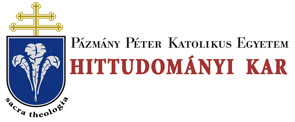Folia Theologica et Canonica, Supplementum (2016)
Szabolcs Anzelm Szijromi, O.Praem., Relationship among the Holy See, Czech-, Polish-and Hungarian Kingdoms in the 13"'-14" century
206 SZABOLCS ANZELM SZUROMI The third component of this epoch was caused by those heretic movements which original form had arrived to Europe through the crusades from the Middle East. The Council of Lateran IV - as the second most important problem - dealt with the growing threat of the Albigensians in the south of France. The council resolved to take measures to prevent the spreading of the Albigensian and Waldensian heresies.4" The Albigensians had already been condemned by the council of Lateran III (1179)40 41, while the Waldensians were a smaller "poor” movement which had become popular more recently.42 The collection of Anselm of Lucca (Collectio Anseimi Lucensis: 1081-1083), which belongs to the canon law collections of the first epoch of the Gregorian period, had already contained some canons which dealt with those heresies that had infiltrated the Christian West from overseas.43 These Gnostic-Manichean or dualist religious concepts appeared especially in the territory of Dalmatia, Italy and France. Provance and Langedoc were centers for the Cathari. The Cathari had managed to establish a number of independent dioceses there in the Twelfth century.44 The followers of Peter Waldes (t 1197) were also present at that time in southern France, northern Italy, Germany and Bohemia.45 The Fourth Lateran Council therefore summarized the basic Catholic doctrines in a Creed which opposed these false Christian movements. Most notably, this Creed contained a more specific exposition of the Church’s teaching on the most holy Eucharist and described the change which took place at the consecration as “transsubstantiatio”.46 At the same time, the council called for a crusade against these heresies. Among other things, this crusade mandated that propagators of these heresies be investigated according to the decisions of the local rulers or bishops.47 The Waldensian problem remained constant even in the 14th 40 Cf. Jedin, H. (a cura di), Storia della chiesa, V/l. 298-303. 41 Can. 21 (...) Eapropter, quia in Gasconia Albigesio et partibus Tolosanis et aliis locis, ¡ta haereticorum, quos alii Catharos, alii Patrinos, alii Publicanos, alii aliis nominibus vocant, invaluit damnata perversitas, ut iam non in occulto sicut aliqui nequitatem suam exerceant, sed suum errorem publice manifestent et ad suum consensum simplices attrahant et infirmos, eos et defensores eorum et receptores anathemati decernimus subiacere, et sub anathemate prohibemus, ne quis eos in domibus vel in terra sua tenere vel fovere vel negotiationem cum eis exercere praesumat. COD 224 42 Cf. Audisio, G., Les ‘Vaudois’. Naissance, vie et mori d’urie dissidence (XII'-XVl‘siècles), Torino 1989. 43 Ans. 6. 58; Ans. 7. 19-20. Thaner, F. (ed.), Anseimi collectio canonum una cum Collectione minore, I—II. Oeniponte 1906-1915. 297; 371-372. Cf. Szuromi Sz. A., Anselm of Lucca as a Canonist (A textual-critical overview on the ‘Collectio Canonum Anseimi Lucensis’) [Adno- tationes in Ius Canonicum], Frankfurt am Main 2006. 44 Thouzellier, Ch., Hérésies et hérétiques, Roma 1969. 189-203, 223-262. 45 Lexikon des Mittelalters, Stuttgart-Weimar 1999. Vili. 1953-1955. ■“Const. 1: COD 230-231. 47 Const. 3: COD 233-235.
